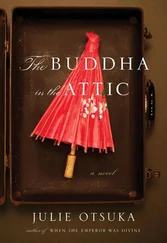“Rubbish!” Pingusson shouted. “How dare you accuse me of chauvinism? When you dismiss this choice as kitsch, are you not entirely disregarding the tradition of feminine power in classical mythology?”
“A fine point,” Lemain said. “And since you’re both so enlightened, gentlemen, why not let the women defend the choice themselves?”
The taller of the student architects-Marie-Laure was her name-began to explain in a neat, clipped French that these were no ordinary caryatids; they were modeled after Suzanne Lenglen, the recently deceased French tennis champion. She went on to defend other features of the design, but Andras lost the thread of the argument. He and Polaner would be critiqued next, and he was too nervous to concentrate on anything but that. Polaner stood beside him, crushing his handkerchief into a dense ball; on his other side was Rosen, who wore a look of vaguely interested detachment. He didn’t have to worry; he hadn’t entered the contest. He’d been too busy with meetings of the Ligue Contre l’Antisemitisme, of which he had recently been elected secretary.
Far too soon for Andras’s comfort, the critique of the women’s sports club concluded and the judges moved on. The students collected behind them around the table where Andras and Polaner’s model was displayed.
“Introduce your project, gentlemen,” Perret said, with a wave of his hand.
Polaner was the first to speak. He tugged at the hem of his jacket, and, in his Polish-tinged French, began to explain the need for an inclusive sports club, one that would stand as a symbol of the founding principles of the Republic. The design would be oriented toward the future; the building’s predominant materials would be reinforced concrete, glass, and steel, with panels of dark wood crowning the doors and windows.
He paused and looked at Andras, who was to speak next. Andras opened his mouth and found that his French had fled entirely. In its place there was an astounding blankness, a book washed clean of text.
“What’s the matter, young man?” Le Corbusier said. “Can’t you speak?”
Andras, who hadn’t slept in three days, was afflicted with a temporal hallucination. Time slowed to a chelonian crawl. He watched the cycle of Le Corbusier’s blink, taking place over what seemed an eternity, behind the plaster-flecked lenses of his glasses. From the back of the amphitheater someone launched an oceanic cough.
He might never have found his voice had not Pierre Vago, Master of Ceremonies, come swiftly to his rescue. Vago was the one who had taught Andras the language he was supposed to speak now; he knew the words that might put Andras at ease. “Why don’t you begin with the piste,” he said. Piste: the running track, French for pálya. They’d had the conversation two days ago in studio: how one said sports track in French, and how that word differed from the ones that meant road, trail, rail, and trace. Andras could talk about the piste; it was the most unusual element of their design, a stroke of recent late-night inspiration. “La piste,” he began, “est construit d’acier galvanisée,” and would be suspended from the roof of the building, halolike, on steel cables attached to reinforced I-beams. The words had come back to him; he spoke them, and Le Corbusier and Lemain and Pingusson listened, making notes on their yellow pads. The suspension design allowed for a longer track than would be possible if the piste were housed inside the building. The sports club would be constructed higher than the surrounding buildings, and the track could hang over their uppermost stories. The roof of the building itself was also the ceiling of the natatorium; Andras bent over the model and demonstrated how it might be retracted in fine weather. Both design elements, the exposed track and the retractable roof, reflected the sports club’s principles of inclusivity and freedom.
When he’d finished, there was a hush in the room. He sent a look of gratitude in the direction of Professor Vago, who refused to acknowledge that he had helped Andras. Then the judges’ questions began: How would a suspended track be kept from bouncing under the runners’ impact? What would happen in a wind? How quickly could the retracted roof be closed again in case of thunderstorms? How did they propose to deal with the problem of housing a hydraulic system in the open space of the natatorium?
Now the words came faster. These were problems Andras and Polaner had discussed and argued about for hours in the studio at night. The supporting cables would be wrapped in thin bands of steel to make them rigid without entirely eliminating their elasticity; a certain degree of spring would cushion the runners’ tread. The track would be braced against the building with support struts to prevent sway. And the hydraulic system would be housed within this closetlike enclosure. After they’d answered all the questions, it seemed to take hours for Pingusson and Lemain and Le Corbusier to inspect the materials and make their notes; even Perret himself insisted upon taking a closer look, muttering to himself as he examined the cross-section of an external wall.
“And who are you, Monsieur Lévi?” Le Corbusier asked finally, lodging his pencil behind his ear.
“I’m a Hungarian, from Konyár, sir,” Andras said.
“Ah. You’re the young man they discovered at the art exhibition. They admitted you to the school based on some linoleum cuts, I understand.”
“Yes,” Andras said, and cleared his throat self-consciously.
“And you, Monsieur Polaner?” Pingusson asked. “From Kraków? They tell me you’ve got a taste for engineering.”
“I do, sir,” Polaner said.
“Well, I’d call the design superb but impractical,” Le Corbusier said. “The zoning is the problem. You’ll never get Parisians to hang a track off a building. It looks a bit like what ladies used to wear under their dresses in the eighteenth century. Those whatever-you-call-them. Martingale. Frimple.”
“More like some sort of outlandish hat,” said Pingusson. “But it’s an awfully good use of urban space.”
“Rather fantastical,” Lemain said. “The building itself is well designed, though. And the wood ornamentation is a fine element. Echoes of gymnasium parquet.”
And then the judges moved on to the next set of designs. It was over. Andras and Polaner exhanged a look of exhausted satisfaction: Their design, if imperfect, had at least been worthy of praise. As the other students surged past them, Rosen clapped them on the shoulders and kissed them on both cheeks.
“Congratulations, boys,” he said. “You’ve created the first ever architectural frimple. If I weren’t entirely broke, I’d treat you both to a drink.”
The next morning, when Andras came in through the blue courtyard doors-the same threshold he’d crossed nearly two years earlier as a novice student-he was greeted by cheers all around. The students in the courtyard clapped and began to chant his name. On a chipped wooden chair in the corner of the yard, Polaner sat in state: Students crowded around him, and a gold medal hung from his neck. Someone had draped the tricolor over his shoulders. A photographer bent to a camera and shot pictures. When Rosen heard the new round of cheers, he rushed over to Andras and took him by the arm.
“Where have you been?” he said. “Everyone’s been waiting for you! You won, idiot. You and your adorable partner. You won the Grand Prix. Your medal’s hanging on display in the amphitheater.”
Andras ran to the amphitheater, where he saw that it was true: Their Sportsclub Saint-Germain was crowned with a gold-stamped certificate and flanked by a medal on a tricolor ribbon. There were the judges’ signatures on the certificate, Le Corbusier’s and Lemain’s and Pingusson’s. He stood alone for a long moment, trying to believe it; he took the medal and turned it over in his hand. It was heavy and burnished, with a portrait of Emile Trélat sculpted in low relief upon its surface. Grand Prix du Amphithéâtre, it read; on the back it was inscribed with Andras’s and Polaner’s names, and the year, 1939. He put the medal on, the weight of it pulling the tricolor ribbon against his neck. He had to see Polaner, and then Professor Vago.
Читать дальше












